After a lengthy flight route that involved three plane rides, three security lines and four(!) customs checkpoints, we made it, bleary-eyed but intact, to Phnom Penh International Airport. Whereas Bangkok's airport tries a little too hard to impress you with its modern design and grand scale, Phnom Penh is decidedly more modest. Soon after getting off the plane, they dump you at the customs counter, where most tourists, us included, have to fill out a form and pay $20 US for a visa to enter the country.
That's another thing. Cambodia has its own currency, the riel, but the de facto standard is the US dollar. The riel is pegged to about 4000 to 1 USD, so the result is an odd hybrid of a monetary system that uses American bills like normal, but eschews American coins in favor of riel bills. It's common here to pay for most things with US dollars, and receive your change back in riel. Once you get used to making the conversions in your head, it's easy to grasp, but the wide array of riel bills that don't have a direct US coin equivalent can be confusing.
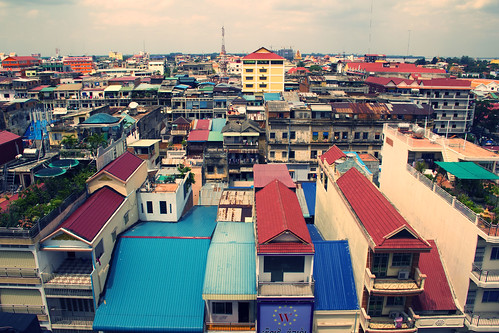
As one might expect from Cambodia's largest city and political/economic hub, Phnom Penh is a lively, colorful city full of street vendors, food carts, precarious-looking construction sites, and (an inevitability in Southeast Asia) an endless stream of motorbikes and cheap taxis geared toward tourists called tuk-tuks streaming through cross-traffic at uncontrolled intersections. If you're walking around here and look obviously foreign, expect to be solicited for a tuk-tuk ride in broken English approximately every 15 seconds. As cheap as they can be, this city's sights are in a compact enough area that you can probably see everything on foot in 1 or 2 days if you're feeling up to it.
That's essentially what we did. We followed a Lonely Planet suggested walking tour, which was alright for a quick overview of the city center. Still, apart from the King's palace and adjacent museum, there isn't a whole lot in terms of obvious sightseeing that this city offers. The most impressive, or maybe imposing, sight we encountered was actually the American embassy, which was a wide, recently constructed building behind tall metal gates and guarded by bored-looking men who enforce the no photos policy. Also on the compound was a modern playground, presumably for diplomats' kids with nothing else to do.

Next up on our tour was the old central market, which was housed in a beautiful, distinctive dome that looks nothing like any other building in this country that I've personally seen (and anywhere else, really). Unfortunately, the hundreds of vendors it houses have only the standard knockoff jeans, shoes, bags, electronics, and tacky souvenirs that are stock in trade for these sorts of places. After wandering around there, we found relief from the heat in a fairly modern, seven-story mall that ended up being pretty similar to the old market- rows of stalls with cheap goods, only stacked vertically and air-conditioned. I needed a belt, so I got my haggling feet wet and managed to knock a couple of bucks off what was probably a fairly inflated price to begin with. Tourists can expect to pay a markup for almost everything that isn't clearly labeled.
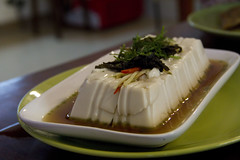
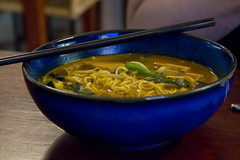
We enjoyed a cheap, filling lunch of curry noodles, fried seaweed, and olive tofu at a nice little vegetarian place called (appropriately enough) The Vegetarian. Across the way was a slightly creepy North Korean restaurant that we were too scared to approach:

Just as well. I've read that these joints exist across East Asia, are administered by the DPRK government, and serve Kim Jong-il's choice delicacies, including, yes, dog meat. Yikes.
After lunch, we found ourselves in a bit of rain. Then a bit more. Then a lot more. Then more rain than I've seen fall at once in my entire life. After a hot, cloudless first few hours, we got soaked head to toe and ran for the nearest tuk-tuk back to our hotel, and watched the crazy flooding that happens in a drain-less city from the safety of our third-floor room.
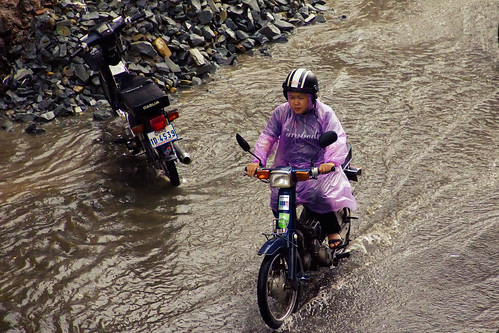
Our accommodations were at the Europe Guesthouse, a comfortable, centrally located, yet modestly priced place two blocks from the Mekong riverfront. The proprietor is a guy named Seng, a Cambodian who grew up in France after hiding out in the wilderness with his family for two months to hide from the Khmer Rouge. He proved to be incredibly friendly and helpful, setting up our visas for Vietnam, booking our bus ride to Battambang, and arranging for a discount rate at a hotel in Siem Reap. His wife was expecting a baby within a few days of our arrival, so he was in and out after our first couple of encounters.
So, how to sum up this city? It ranges from dirty, smelly, congested and loud to beautiful, energetic and delicious. It makes Bangkok seem tame in comparison, and it's nowhere nearly as tourist-friendly or developed in terms of infrastructure and transportation. Sidewalks, if they exist, are almost entirely taken up by cars, carts, garbage, inexplicable piles of rubble, and anything else you might think of. All in all, it's a little scummy and rough around the edges without being particularly dangerous, if that's your kind of thing.
That said, it's well-traveled and semi-accessible without feeling overcrowded with other backpackers and tour groups-- probably a byproduct of visiting during the rainy season. It's dense and closely knit without being suffocating, compared to, again, Bangkok, which tended to feel either oddly empty and lonely, or overfull with scam artists and entitled Westerners with large suitcases. I wouldn't recommend staying in Phnom Penh more than a few days, but there's still a lot more to offer than what I expected, particularly outside of the usual sightseeing stops.
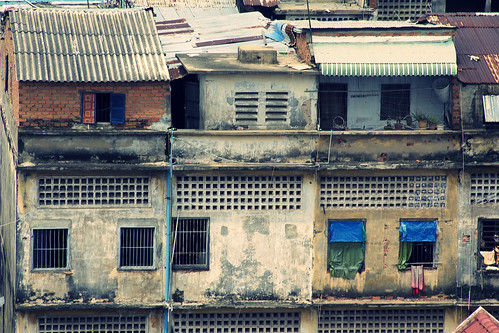
We'll have more later, including Cambodia's version of high-speed rail in Battambang, and exploring Angkor Wat. In the meantime, we're getting ready to leave for Ho Chi Minh City/Saigon tomorrow morning. Catch you all later...








No comments:
Post a Comment